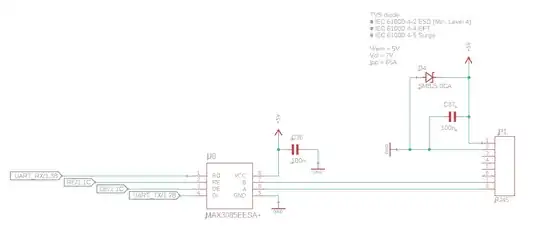I am undecided whether or not to add a common mode choke in my product that needs to undergo EMC testing for CE marking. Let me describe my case... My device is split into 2 parts, connected with each other with a 2 meter cable. The overview is the following:

For better comprehension, here the detailed sub device:

I got different opinions about adding a common mode choke very close to the connector. What's your opinion on this? I do not expect UART frequencies higher than a few kHz. My main goal is to, control the emissions to pass the EMC test.
Thank you:)